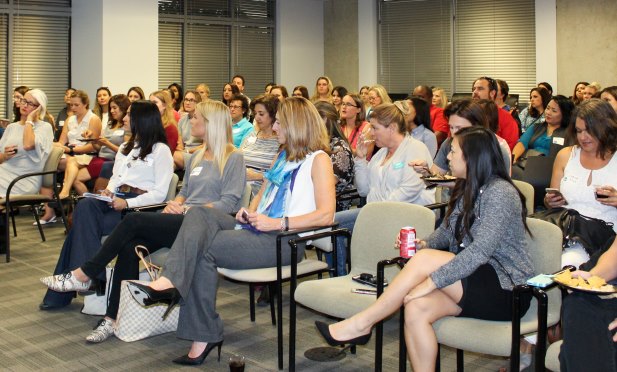
SAN FRANCISCO—With females outnumbering males in California, more work is needed to bring the commercial real estate and construction fields up to parity for women. Women in Construction Operations/WiOPS is attempting to do just that, with a Northern California chapter set to begin holding meetings next month. Some of the challenges, influence and benefits of women in construction operations were discussed by WiOPS board members, Melissa Berg, Dome Construction; Jennifer Lauritzen, Swinerton and Christina Greystone, ISEC in the second of a two-part exclusive.
GlobeSt.com: What current challenges do women have in the architecture, engineering and construction industry and how is WiOPS helping mitigate those challenges?
Lauritzen: While we have seen growth in the number of women in the industry, the percentage is still too low when you consider the population in California is 49.8% male and 50.2% female. In an ideal state, the percentage of women in the industry would more closely align with the population. WiOPS is bringing professional women in the industry together with the purpose of providing a place for them to learn more about technology and development in the industry, as well as a place to discuss the specific issues women face in their careers, and obtain feedback and guidance from others who have been through it.
Berg: The construction industry in general lags behind other industries in the number of women leaders and owners. Having mentors who have figured out how to navigate the industry can mean the difference in women having the confidence to take the next step in their careers.
GlobeSt.com: What do you feel has been the biggest and most positive influence women have had in the construction industry?
Lauritzen: The current movement in the country to put a spotlight on the challenges women face in the workplace has been a long time coming. Sheryl Sandberg and her book “Lean In,” while it was not construction-industry specific, has had a positive impact on women in construction. Even if you don't agree with everything she wrote, it has sparked more talking about the issues that women face at work. This has led to action by individuals, organizations such as WiOPS and companies, to bring about positive change in both the way women behave and are treated in the workplace.
Berg: As with any industry, the more diverse your teams, the better off you are as a company. When you have more ideas from different perspectives, you come up with better well-rounded solutions.
GlobeSt.com: Why did you get involved with WiOPS?
Lauritzen: I got involved with WiOPS because of the focus on creating mentor/mentee relationships. I feel this is a big part of what is missing for workplace women, not just in construction but in all industries. I am excited to meet more women in my chosen career and to find mentors that can help me as I move into higher leadership roles. It is not an easy industry for a woman and I also have a lot of lessons learned through my experiences that I feel I can share as a mentor to the younger women who are looking to build those relationships for themselves.
Greystone: I was involved in WIOPS in Southern California and I met an amazing group of women that can all relate to each other in some sort of way. We talk about work, managing family, we all have goals and are striving to achieve to the next level. I moved to Northern California and I was looking for something similar. Then I heard WIOPS was forming its next chapter here. And I immediately jumped on board to see how I could assist in making this as successful as Southern California has made it.
Berg: As a woman who fought my way through a mostly male engineering school and then fought for every promotion received in the construction industry to-date, I really want to be the mentor to other women that I didn't have.
How have you personally benefited from WiOPS?
Lauritzen: Becoming involved in the WiOPS Norcal chapter as a board member has allowed me the opportunity to be part of something meaningful in the industry. I look forward to bringing all these smart, successful women together and helping them to build the relationships necessary for successful careers.
Greystone: I have benefited in several ways. I have listened to some key speakers and gained knowledge. In talking to women who I consider to be great mentors, I have gained advice. In networking, I have talked about work, and gained a few new strategies and different perspectives. I have also learned how to look at the bigger picture—sometimes your scope is affected, or you will be affected by trades you never thought of.

SAN FRANCISCO—With females outnumbering males in California, more work is needed to bring the commercial real estate and construction fields up to parity for women. Women in Construction Operations/WiOPS is attempting to do just that, with a Northern California chapter set to begin holding meetings next month. Some of the challenges, influence and benefits of women in construction operations were discussed by WiOPS board members, Melissa Berg, Dome Construction; Jennifer Lauritzen, Swinerton and Christina Greystone, ISEC in the second of a two-part exclusive.
GlobeSt.com: What current challenges do women have in the architecture, engineering and construction industry and how is WiOPS helping mitigate those challenges?
Lauritzen: While we have seen growth in the number of women in the industry, the percentage is still too low when you consider the population in California is 49.8% male and 50.2% female. In an ideal state, the percentage of women in the industry would more closely align with the population. WiOPS is bringing professional women in the industry together with the purpose of providing a place for them to learn more about technology and development in the industry, as well as a place to discuss the specific issues women face in their careers, and obtain feedback and guidance from others who have been through it.
Berg: The construction industry in general lags behind other industries in the number of women leaders and owners. Having mentors who have figured out how to navigate the industry can mean the difference in women having the confidence to take the next step in their careers.
GlobeSt.com: What do you feel has been the biggest and most positive influence women have had in the construction industry?
Lauritzen: The current movement in the country to put a spotlight on the challenges women face in the workplace has been a long time coming. Sheryl Sandberg and her book “Lean In,” while it was not construction-industry specific, has had a positive impact on women in construction. Even if you don't agree with everything she wrote, it has sparked more talking about the issues that women face at work. This has led to action by individuals, organizations such as WiOPS and companies, to bring about positive change in both the way women behave and are treated in the workplace.
Berg: As with any industry, the more diverse your teams, the better off you are as a company. When you have more ideas from different perspectives, you come up with better well-rounded solutions.
GlobeSt.com: Why did you get involved with WiOPS?
Lauritzen: I got involved with WiOPS because of the focus on creating mentor/mentee relationships. I feel this is a big part of what is missing for workplace women, not just in construction but in all industries. I am excited to meet more women in my chosen career and to find mentors that can help me as I move into higher leadership roles. It is not an easy industry for a woman and I also have a lot of lessons learned through my experiences that I feel I can share as a mentor to the younger women who are looking to build those relationships for themselves.
Greystone: I was involved in WIOPS in Southern California and I met an amazing group of women that can all relate to each other in some sort of way. We talk about work, managing family, we all have goals and are striving to achieve to the next level. I moved to Northern California and I was looking for something similar. Then I heard WIOPS was forming its next chapter here. And I immediately jumped on board to see how I could assist in making this as successful as Southern California has made it.
Berg: As a woman who fought my way through a mostly male engineering school and then fought for every promotion received in the construction industry to-date, I really want to be the mentor to other women that I didn't have.
How have you personally benefited from WiOPS?
Lauritzen: Becoming involved in the WiOPS Norcal chapter as a board member has allowed me the opportunity to be part of something meaningful in the industry. I look forward to bringing all these smart, successful women together and helping them to build the relationships necessary for successful careers.
Greystone: I have benefited in several ways. I have listened to some key speakers and gained knowledge. In talking to women who I consider to be great mentors, I have gained advice. In networking, I have talked about work, and gained a few new strategies and different perspectives. I have also learned how to look at the bigger picture—sometimes your scope is affected, or you will be affected by trades you never thought of.
© Touchpoint Markets, All Rights Reserved. Request academic re-use from www.copyright.com. All other uses, submit a request to [email protected]. For more inforrmation visit Asset & Logo Licensing.







